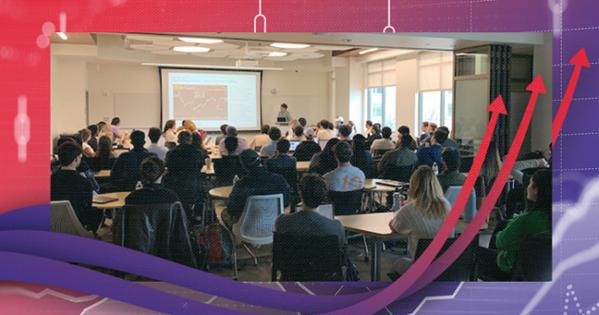HR Analytics: Challenges and Drivers in an Evidence-Based Business World

In a business environment that is changing at speeds never seen before, many organizations are responding by implementing strategies that apply critical evaluation, leverage real-time data, and cultivate agile decision-making. VUCA (volatility, uncertainty, complexity and ambiguity) is an acronym coined by the military which reflects extreme conditions; in business it supports the concept that technological advances and a global economy have created new challenges, which requires eradicating status quo thinking. VUCA is challenging organizations to reframe the utilization of technology for all stakeholders; it is requiring flexibility in job design, organizational structure, systems-thinking paired with agility; and asking what customers really want so they stay loyal to the organization in spite of competition. In this evolving business landscape, organizations are finding that the ways in which they previously managed business are not sufficient within today’s VUCA environment.1 2 3
Human Resources has an opportunity to support these business changes, the systems-thinking, and data analysis focus, as well as providing leadership programs needed to succeed in this environment. There are also HR challenges that may need to be reconsidered to work as a change agent, coach and consultant in culture design. Although the opportunity is present, often the HR leader/executive does not have the skills associated with analytics, and often business leaders are not prepared to make the necessary changes to remain competitive.
Challenges for Evidence-Based Decision Making 4
- Mindset: Often, business decisions are based on what worked in the past and/or a leader’s beliefs, rather than evidence-based analysis.
- Half-Truths & Total Nonsense: All too often, decisions continue to be made on flimsy information, questionable knowledge, and/or a book by the newest ‘best-practice’ author.
- Casual Benchmarking: Why something works at one organization does not take into account the culture, vision and mission, and knowledge of the top performing companies being copied. Often, the most visible practices are copied, but these may not be the most important.
Challenges for HR Analytics
- Holding Information: HRIS, LMS, ATS, etc. are chock full of ripe, relevant, and often current information. Yet, it is not common practice that HR delivers high-impact reports to stakeholders.
- Broad Data: Focusing on metrics too big to assess. E.g. Voluntary vs. Involuntary Termination statistics. What if the right people are voluntarily leaving? What if the wrong employees are staying? Another example: EEO statistics are provided to the Dept. of Labor annually (for most organizations), but if an organization is charged with discrimination, data relating to specific managers are also required. Is this information reviewed?
- Analysis Skills: HR is often not the analytical expert in the organization; instead it was the CFO or Engineering or Quality team. Enhancing analysis and data evaluation skills may be a professional development focus for some HR professionals.
- Big Data and NOT So Big: If the organization is large, it is easy to collect big data on recruiting, training, succession planning, turnover. But organizations that are smaller do not often have big data. Therefore analysis and critical thinking related to smaller data require different approaches when small samples are used to make big decisions.
- Assessments in Hiring: Uniform Guidelines on Employee Selection Procedure (from Dept. of Labor) requires all processes/practices used to hire/promote to be valid. Too often, assessments or practices are used that have not been internally validated (tests, assessments, interview practices, review of applications).
- Curiosity: Ask, “What is the most important thing(s) needed to be evaluated to impact the business and to help leaders make informed decisions?”
Applying Critical Evaluation 5
- Identify key stakeholders: Who needs to have information that you have? What could stakeholders benefit from specific data/information/metrics you have access to?
- Identify the Tools: What technology is available for you to pull information? What other departments’ software/tools to run reports?
- Broad Data or Specifics: What is the story you want/need to tell?
- Collaborate with Managers: Work with analytical managers to cultivate your own skills, to help understand the right data for right decisions.
- Effective Visuals: Become an SME on displaying data with the appropriate charts, graphs, reports.
Human Resource professionals are positioned to impact business results by leading and supporting change initiatives, fact-based decision making, and systematic processes and programs. Identifying the specific challenges in one’s own organization, then measuring and evaluating the best metrics to measure successful change are optimal ways to build business acumen and drive positive business results.
Resources
1 Bennett, N., & Lemoine, J. (2014). What a difference a word makes: Understanding threats to performance in a VUCA world. Business Horizons, 57(3), 311-317. doi: 10.1016/j.bushor.2014.01.001
5 Currence, J. (2017). Applying critical evaluation. Alexandra, VA: SHRM.
2 Euchner, J. (2013). Navigating the VUCA world: An interview with Bob Johansen. Research Technology Management, 56(1), 10-15. Retrieved from http://search.proquest.com/docview/1315648342?accountid=14745
3 Ganguly, D. (2013). How business leaders navigate in a world of VUCA: Volatility, uncertainty, complexity, ambiguity corporate dossier. The Economic Times (Online). Retrieved from http://search.proquest.com/docview/1449777929?accountid=14745
4 Pfeffer, J., & Sutton, R. I. (2006). Hard facts, dangerous half-truths, & total nonsense: Profiting from evidence-based management. Boston, MA: Harvard Business School Publishing.
About the Author
 Patricia Sullivan, PhD, is a leadership coach and business consultant. With over 25 years leading HR teams, she is focused on leadership development, employee engagement, organizational commitment, and supporting mind/body/spirit alignment.
Patricia Sullivan, PhD, is a leadership coach and business consultant. With over 25 years leading HR teams, she is focused on leadership development, employee engagement, organizational commitment, and supporting mind/body/spirit alignment.
